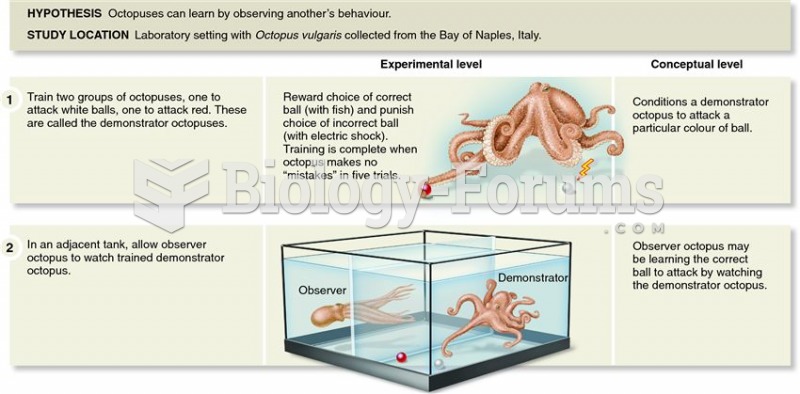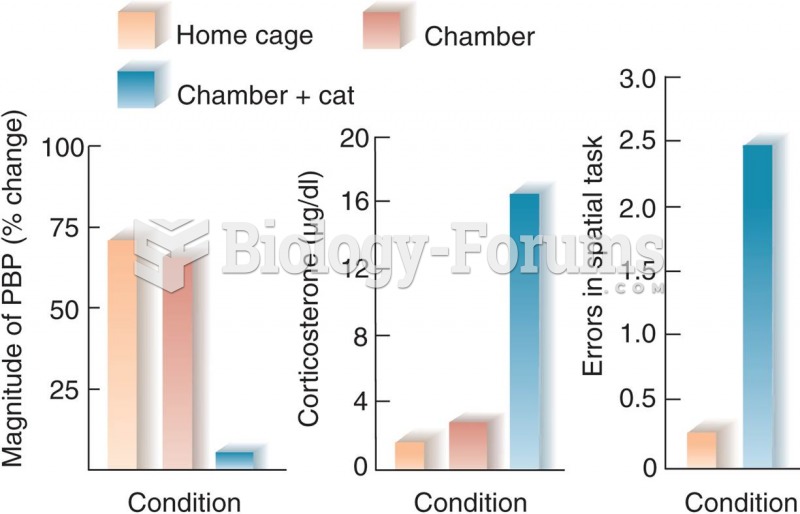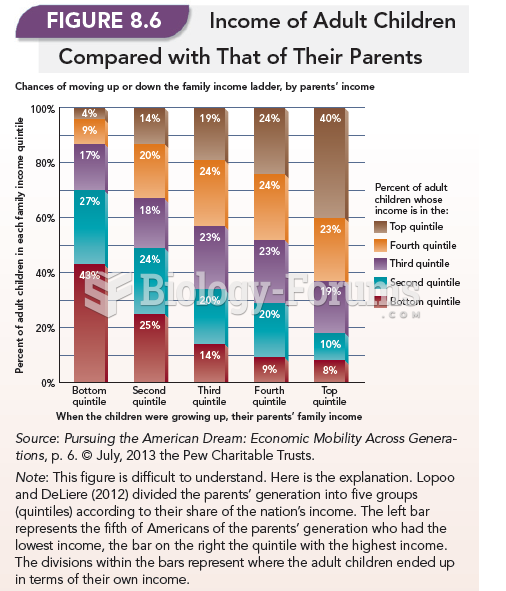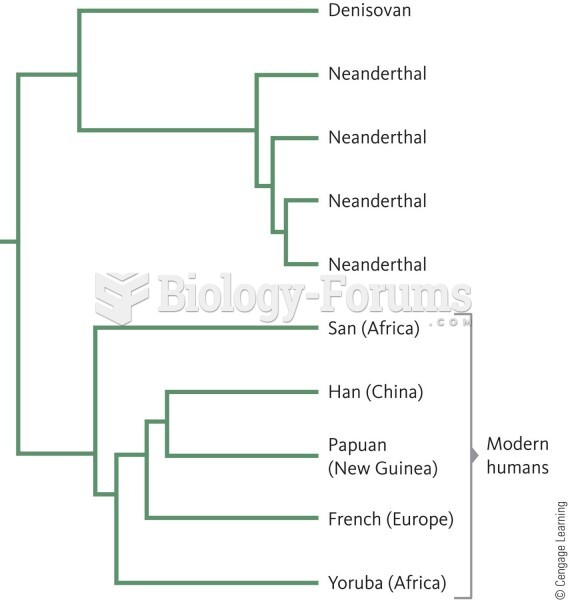|
|
|
The liver is the only organ that has the ability to regenerate itself after certain types of damage. As much as 25% of the liver can be removed, and it will still regenerate back to its original shape and size. However, the liver cannot regenerate after severe damage caused by alcohol.
The largest baby ever born weighed more than 23 pounds but died just 11 hours after his birth in 1879. The largest surviving baby was born in October 2009 in Sumatra, Indonesia, and weighed an astounding 19.2 pounds at birth.
The Romans did not use numerals to indicate fractions but instead used words to indicate parts of a whole.
The ratio of hydrogen atoms to oxygen in water (H2O) is 2:1.
This year, an estimated 1.4 million Americans will have a new or recurrent heart attack.







